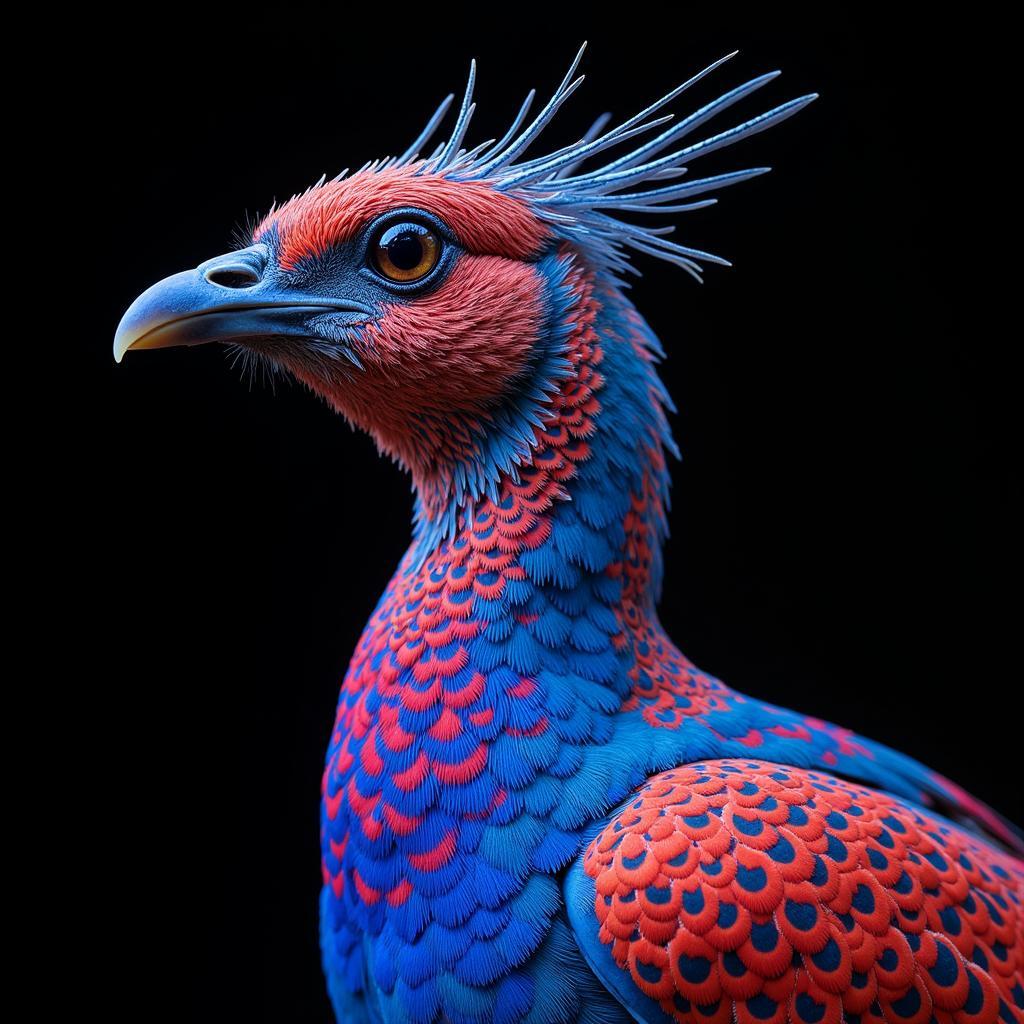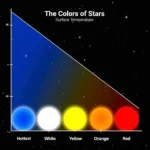We humans tend to think we’re pretty special, but when it comes to color vision, the avian world leaves us in the dust. Have you ever wondered, “Can birds see more colors than humans?” The answer is a resounding yes! While we perceive a rainbow of colors, birds experience a world bursting with hues we can’t even imagine. Let’s dive into the fascinating science behind avian vision and discover why their world is so much more vibrant than our own.
Unveiling the Science of Color Vision
To understand why birds see a broader spectrum of color, we need to delve into the biology of the eye. Both humans and birds possess special cells in their eyes called cones that are responsible for detecting color. Humans have three types of cones, allowing us to see red, green, and blue light, which we combine to perceive millions of color variations.
Birds, on the other hand, have a superpower: a fourth type of cone! This extra cone allows them to see ultraviolet light, a wavelength invisible to the human eye. Imagine a world where flowers, feathers, and even patterns on potential mates glow with an entirely new dimension of color – that’s everyday life for a bird!
A World Beyond the Rainbow: The Ultraviolet Advantage
The ability to see ultraviolet light isn’t just about pretty colors; it offers birds a significant advantage in survival and reproduction. For example, many birds of prey can track the urine trails of rodents, which are highly visible in ultraviolet light. This gives them a distinct hunting edge.
 Birds of Prey Utilizing UV Vision
Birds of Prey Utilizing UV Vision
Birds also use ultraviolet vision to assess the quality of potential mates. Some male birds have ultraviolet patterns on their feathers that signal their health and genetic fitness to females, even if those patterns appear dull to our eyes.
 Bird Plumage Under UV Light
Bird Plumage Under UV Light
Beyond Ultraviolet: A Symphony of Colors
While the fourth cone is a game-changer, it’s not the whole story. Birds also have more densely packed cones in their retinas compared to humans. This means they can see finer details and subtle color variations that we simply miss. Think of it this way: if we’re watching a standard definition television, birds are enjoying the vibrant clarity of an 8K Ultra HD display.
But it’s not just about quantity; birds also have oil droplets in their cones that act as filters, further refining their color perception. These droplets enhance color contrast and allow birds to differentiate between even more shades within the color spectrum.
The World Through Avian Eyes
Imagine taking a walk in the park. The leaves appear green to us, but a bird might see a dazzling array of greens, yellows, and even reds, depending on the plant’s health and the way sunlight filters through the leaves. A flower that looks plain to us could be a beacon of ultraviolet patterns, attracting pollinators with a dazzling light show we can only imagine.
 Flower with UV Patterns
Flower with UV Patterns
Conclusion
The next time you see a bird flitting through your backyard, remember that it’s experiencing a world far richer and more vibrant than we can fathom. Their superior color vision is a testament to the power of evolution and a reminder that the world is full of wonders that lie beyond our limited human perception.
Do you want to learn more about the fascinating world of animal vision? Discover how other creatures see the world: read about can rats see in color, can ducks see color, why do tortoises hate the color black, what color are parrots, can penguins see color.

